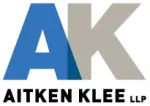On October 12, 2016 the Federal Court of Appeal released a number of judgments dealing with the circumstances in which a cross-referenced drug submission must readdress patents under the PM(NOC) Regulations.
Teva exemestane
As previous reported here, Generic Medical Partners had obtained an NOC for its exemestane product when Pfizer did not commence a prohibition application in response to GMP's notice of allegation. Teva then filed a cross-licensed submission representing its drug was identical to that of GMP, save for the name of the manufacturer and the product. The Minister concluded that Teva did not have to re-address the listed patents in these circumstance and grated Teva an NOC. Pfizer's judicial review application seeking to quash Teva's NOC was heard by Justice Gleason who allowed Pfizer's application, holding that the Minister's decision was not correct.
Celltrion/Hospira infliximab
In November 2012, Celltrion filed a NDS for its infliximab product before Canadian Patent 2,261,630 was listed on the Patent Register against Janssen's REMICADE product. Celltrion's NDS identified Hospira as the distributor of INFLECTRA. After the 630 Patent was added to the Patent Register, Hospira filed a NDS cross-referencing Celltrion's submission including a certification that all aspects of Hospira's drug product, other than the name, would be identical to the Celltrion product. After the Minister concluded that Hopsira did not need to address the 630 Patent and issued an NOC to Hospira, Janssen brought a judicial review application seeking to quash the Hospira's NOC. The Federal Court, on the consent of the parties, quashed the NOC without prejudice to the appeal so that the Hospira's appeal could be heard with that in Teva exemestane.
Consolidated appeals
The appeal largely turned on the proper standard of review with the FCA holding that the Applications Judge had erred by reviewing the Minister's decision to issue the relevant NOCs on a correctness standard. Since the Supreme Court of Canada in Biolyse and AstraZeneca did not consider the presumption of reasonableness subsequently enunciated in Alberta Teachers, the correctness standard of applied in the earlier decisions was not binding.
The proper question, as framed by the Court of Appeal, was whether the PM(NOC) Regulations evidence Parliament's intention that the Minister of Health's interpretation of the Regulations be reviewed on a less deferential standard of review. Unlike the Applications Judge, the FCA held that a contextual analysis does not rebut the presumption of reasonableness, which, following Dunsmuir, applies where the decision maker is interpreting "statutes closely connected to its function":
[58] In Dunsmuir, at paragraph 68, the Supreme Court recognized that where there is a discrete or special administrative regime in which the decision-maker has special expertise, that decision-maker is entitled to deference. In my view Health Canada, and through it the Minister, are required on a regular basis to interpret section 5 of the Regulations. For example, the Minister is required to determine whether to issue a NOC or to place a drug submission on patent hold. In AstraZeneca, the Supreme Court required the Minister to conduct a patent-specific analysis when applying subsection 5(1) because a "generic manufacturer is only required to address the cluster of patents listed against submissions relevant to the NOC that gave rise to the comparator drug" (AstraZeneca, at paragraph 39).
[59] It follows from the nature of the question and the Minister's expertise that the decisions at issue should be reviewed on the standard of reasonableness.
Because the Applications Judge applied the wrong standard, the FCA reviewed the Minister's decision on the reasonableness standard. Following the decision of the Supreme Court of Canada in AstraZeneca, the Court concluded that the question of whether Teva or Hospira "early worked" the invention was a relevant consideration and that the Minister's decisions were reasonable:
[90] In the case of Teva, GMP possessed a NOC that entitled it to sell MED-EXEMESTANE tablets. GMP then licensed Teva to sell its tablets. This required Teva to obtain its own NOC. Teva did not submit any data in support of its application. Instead, it certified that its drug product was identical to GMP's drug except for the name of the manufacturer and the product. It also certified that its drug product would be manufactured in the same location as GMP' s drug product, with identical specifications and procedures. No evidence supports the submission that Teva "early worked" Pfizer's patented invention.
[91] In this circumstance, I cannot conclude that the Minister's interpretation of subsection 5(1) of the Regulations was unreasonable. Teva sought approval to market a product identical to that which GMP was already entitled to market – in this circumstance it was not unreasonable for the Minister to decline to confer on Pfizer the robust advantages conferred on an innovator by the Regulations. Pfizer elected not to challenge GMP's notice of allegation. To require Teva to serve a new notice of allegation on Pfizer for the identical product would, in effect, allow Pfizer to challenge Teva's later notice of allegation on the basis of Pfizer's assessment of competitive considerations; considerations unrelated to the nature of Teva's drug product. Importantly, it must be remembered that the issuance of a NOC to Teva does not provide any defence to an action for patent infringement brought by Pfizer. Pfizer may sue if Teva's product infringes Pfizer's patent.
...
[94] For the same reasons, I find that the Minister of Health's decision to issue a NOC to Hospira was reasonable
Teva was represented on the appeal by Jon Stainsby and Bryan Norrie of Aitken Klee.
A copy of the Court of Appeal's Reasons for Judgment may be found here.
The content of this article is intended to provide a general guide to the subject matter. Specialist advice should be sought about your specific circumstances.


